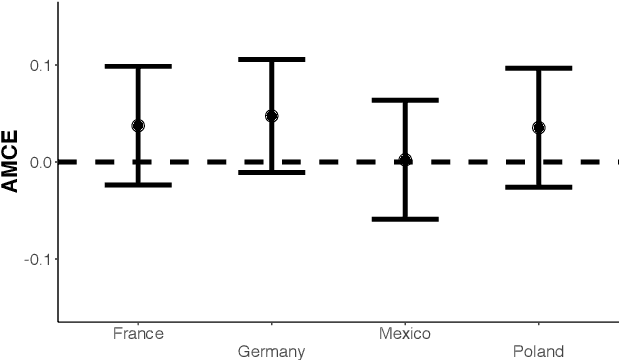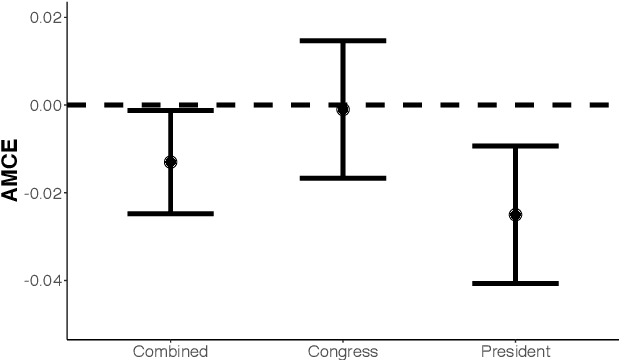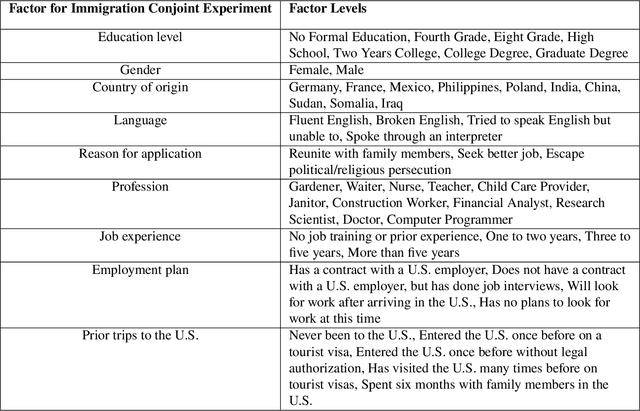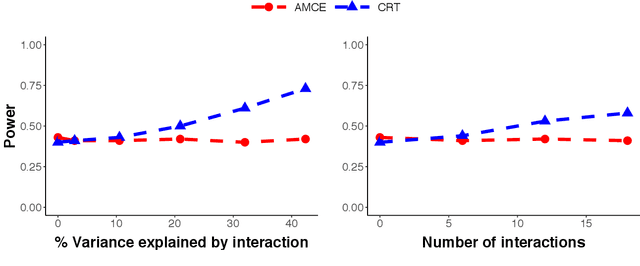Lucas Janson
Foundations of Safe Online Reinforcement Learning in the Linear Quadratic Regulator: $\sqrt{T}$-Regret
Apr 25, 2025Abstract:Understanding how to efficiently learn while adhering to safety constraints is essential for using online reinforcement learning in practical applications. However, proving rigorous regret bounds for safety-constrained reinforcement learning is difficult due to the complex interaction between safety, exploration, and exploitation. In this work, we seek to establish foundations for safety-constrained reinforcement learning by studying the canonical problem of controlling a one-dimensional linear dynamical system with unknown dynamics. We study the safety-constrained version of this problem, where the state must with high probability stay within a safe region, and we provide the first safe algorithm that achieves regret of $\tilde{O}_T(\sqrt{T})$. Furthermore, the regret is with respect to the baseline of truncated linear controllers, a natural baseline of non-linear controllers that are well-suited for safety-constrained linear systems. In addition to introducing this new baseline, we also prove several desirable continuity properties of the optimal controller in this baseline. In showing our main result, we prove that whenever the constraints impact the optimal controller, the non-linearity of our controller class leads to a faster rate of learning than in the unconstrained setting.
Stronger Regret Bounds for Safe Online Reinforcement Learning in the Linear Quadratic Regulator
Oct 28, 2024Abstract:Many practical applications of online reinforcement learning require the satisfaction of safety constraints while learning about the unknown environment. In this work, we study Linear Quadratic Regulator (LQR) learning with unknown dynamics, but with the additional constraint that the position must stay within a safe region for the entire trajectory with high probability. Unlike in previous works, we allow for both bounded and unbounded noise distributions and study stronger baselines of nonlinear controllers that are better suited for constrained problems than linear controllers. Due to these complications, we focus on 1-dimensional state- and action- spaces, however we also discuss how we expect the high-level takeaways can generalize to higher dimensions. Our primary contribution is the first $\tilde{O}_T(\sqrt{T})$-regret bound for constrained LQR learning, which we show relative to a specific baseline of non-linear controllers. We then prove that, for any non-linear baseline satisfying natural assumptions, $\tilde{O}_T(\sqrt{T})$-regret is possible when the noise distribution has sufficiently large support and $\tilde{O}_T(T^{2/3})$-regret is possible for any subgaussian noise distribution. An overarching theme of our results is that enforcing safety provides "free exploration" that compensates for the added cost of uncertainty in safety constrained control, resulting in the same regret rate as in the unconstrained problem.
SOAP: Improving and Stabilizing Shampoo using Adam
Sep 17, 2024Abstract:There is growing evidence of the effectiveness of Shampoo, a higher-order preconditioning method, over Adam in deep learning optimization tasks. However, Shampoo's drawbacks include additional hyperparameters and computational overhead when compared to Adam, which only updates running averages of first- and second-moment quantities. This work establishes a formal connection between Shampoo (implemented with the 1/2 power) and Adafactor -- a memory-efficient approximation of Adam -- showing that Shampoo is equivalent to running Adafactor in the eigenbasis of Shampoo's preconditioner. This insight leads to the design of a simpler and computationally efficient algorithm: $\textbf{S}$hampo$\textbf{O}$ with $\textbf{A}$dam in the $\textbf{P}$reconditioner's eigenbasis (SOAP). With regards to improving Shampoo's computational efficiency, the most straightforward approach would be to simply compute Shampoo's eigendecomposition less frequently. Unfortunately, as our empirical results show, this leads to performance degradation that worsens with this frequency. SOAP mitigates this degradation by continually updating the running average of the second moment, just as Adam does, but in the current (slowly changing) coordinate basis. Furthermore, since SOAP is equivalent to running Adam in a rotated space, it introduces only one additional hyperparameter (the preconditioning frequency) compared to Adam. We empirically evaluate SOAP on language model pre-training with 360m and 660m sized models. In the large batch regime, SOAP reduces the number of iterations by over 40% and wall clock time by over 35% compared to AdamW, with approximately 20% improvements in both metrics compared to Shampoo. An implementation of SOAP is available at https://github.com/nikhilvyas/SOAP.
Optimal ablation for interpretability
Sep 16, 2024Abstract:Interpretability studies often involve tracing the flow of information through machine learning models to identify specific model components that perform relevant computations for tasks of interest. Prior work quantifies the importance of a model component on a particular task by measuring the impact of performing ablation on that component, or simulating model inference with the component disabled. We propose a new method, optimal ablation (OA), and show that OA-based component importance has theoretical and empirical advantages over measuring importance via other ablation methods. We also show that OA-based component importance can benefit several downstream interpretability tasks, including circuit discovery, localization of factual recall, and latent prediction.
A New Perspective on Shampoo's Preconditioner
Jun 25, 2024Abstract:Shampoo, a second-order optimization algorithm which uses a Kronecker product preconditioner, has recently garnered increasing attention from the machine learning community. The preconditioner used by Shampoo can be viewed either as an approximation of the Gauss--Newton component of the Hessian or the covariance matrix of the gradients maintained by Adagrad. We provide an explicit and novel connection between the $\textit{optimal}$ Kronecker product approximation of these matrices and the approximation made by Shampoo. Our connection highlights a subtle but common misconception about Shampoo's approximation. In particular, the $\textit{square}$ of the approximation used by the Shampoo optimizer is equivalent to a single step of the power iteration algorithm for computing the aforementioned optimal Kronecker product approximation. Across a variety of datasets and architectures we empirically demonstrate that this is close to the optimal Kronecker product approximation. Additionally, for the Hessian approximation viewpoint, we empirically study the impact of various practical tricks to make Shampoo more computationally efficient (such as using the batch gradient and the empirical Fisher) on the quality of Hessian approximation.
Evaluating the Effectiveness of Index-Based Treatment Allocation
Feb 19, 2024Abstract:When resources are scarce, an allocation policy is needed to decide who receives a resource. This problem occurs, for instance, when allocating scarce medical resources and is often solved using modern ML methods. This paper introduces methods to evaluate index-based allocation policies -- that allocate a fixed number of resources to those who need them the most -- by using data from a randomized control trial. Such policies create dependencies between agents, which render the assumptions behind standard statistical tests invalid and limit the effectiveness of estimators. Addressing these challenges, we translate and extend recent ideas from the statistics literature to present an efficient estimator and methods for computing asymptotically correct confidence intervals. This enables us to effectively draw valid statistical conclusions, a critical gap in previous work. Our extensive experiments validate our methodology in practical settings, while also showcasing its statistical power. We conclude by proposing and empirically verifying extensions of our methodology that enable us to reevaluate a past randomized control trial to evaluate different ML allocation policies in the context of a mHealth program, drawing previously invisible conclusions.
A Bayesian Approach to Online Learning for Contextual Restless Bandits with Applications to Public Health
Feb 07, 2024



Abstract:Restless multi-armed bandits (RMABs) are used to model sequential resource allocation in public health intervention programs. In these settings, the underlying transition dynamics are often unknown a priori, requiring online reinforcement learning (RL). However, existing methods in online RL for RMABs cannot incorporate properties often present in real-world public health applications, such as contextual information and non-stationarity. We present Bayesian Learning for Contextual RMABs (BCoR), an online RL approach for RMABs that novelly combines techniques in Bayesian modeling with Thompson sampling to flexibly model a wide range of complex RMAB settings, such as contextual and non-stationary RMABs. A key contribution of our approach is its ability to leverage shared information within and between arms to learn unknown RMAB transition dynamics quickly in budget-constrained settings with relatively short time horizons. Empirically, we show that BCoR achieves substantially higher finite-sample performance than existing approaches over a range of experimental settings, including one constructed from a real-world public health campaign in India.
Statistical Inference After Adaptive Sampling in Non-Markovian Environments
Feb 14, 2022
Abstract:There is a great desire to use adaptive sampling methods, such as reinforcement learning (RL) and bandit algorithms, for the real-time personalization of interventions in digital applications like mobile health and education. A major obstacle preventing more widespread use of such algorithms in practice is the lack of assurance that the resulting adaptively collected data can be used to reliably answer inferential questions, including questions about time-varying causal effects. Current methods for statistical inference on such data are insufficient because they (a) make strong assumptions regarding the environment dynamics, e.g., assume a contextual bandit or Markovian environment, or (b) require data to be collected with one adaptive sampling algorithm per user, which excludes data collected by algorithms that learn to select actions by pooling the data of multiple users. In this work, we make initial progress by introducing the adaptive sandwich estimator to quantify uncertainty; this estimator (a) is valid even when user rewards and contexts are non-stationary and highly dependent over time, and (b) accommodates settings in which an online adaptive sampling algorithm learns using the data of all users. Furthermore, our inference method is robust to misspecification of the reward models used by the adaptive sampling algorithm. This work is motivated by our work designing experiments in which RL algorithms are used to select actions, yet reliable statistical inference is essential for conducting primary analyses after the trial is over.
Rate-matching the regret lower-bound in the linear quadratic regulator with unknown dynamics
Feb 11, 2022Abstract:The theory of reinforcement learning currently suffers from a mismatch between its empirical performance and the theoretical characterization of its performance, with consequences for, e.g., the understanding of sample efficiency, safety, and robustness. The linear quadratic regulator with unknown dynamics is a fundamental reinforcement learning setting with significant structure in its dynamics and cost function, yet even in this setting there is a gap between the best known regret lower-bound of $\Omega_p(\sqrt{T})$ and the best known upper-bound of $O_p(\sqrt{T}\,\text{polylog}(T))$. The contribution of this paper is to close that gap by establishing a novel regret upper-bound of $O_p(\sqrt{T})$. Our proof is constructive in that it analyzes the regret of a concrete algorithm, and simultaneously establishes an estimation error bound on the dynamics of $O_p(T^{-1/4})$ which is also the first to match the rate of a known lower-bound. The two keys to our improved proof technique are (1) a more precise upper- and lower-bound on the system Gram matrix and (2) a self-bounding argument for the expected estimation error of the optimal controller.
Using Machine Learning to Test Causal Hypotheses in Conjoint Analysis
Jan 20, 2022



Abstract:Conjoint analysis is a popular experimental design used to measure multidimensional preferences. Researchers examine how varying a factor of interest, while controlling for other relevant factors, influences decision-making. Currently, there exist two methodological approaches to analyzing data from a conjoint experiment. The first focuses on estimating the average marginal effects of each factor while averaging over the other factors. Although this allows for straightforward design-based estimation, the results critically depend on the distribution of other factors and how interaction effects are aggregated. An alternative model-based approach can compute various quantities of interest, but requires researchers to correctly specify the model, a challenging task for conjoint analysis with many factors and possible interactions. In addition, a commonly used logistic regression has poor statistical properties even with a moderate number of factors when incorporating interactions. We propose a new hypothesis testing approach based on the conditional randomization test to answer the most fundamental question of conjoint analysis: Does a factor of interest matter in any way given the other factors? Our methodology is solely based on the randomization of factors, and hence is free from assumptions. Yet, it allows researchers to use any test statistic, including those based on complex machine learning algorithms. As a result, we are able to combine the strengths of the existing design-based and model-based approaches. We illustrate the proposed methodology through conjoint analysis of immigration preferences and political candidate evaluation. We also extend the proposed approach to test for regularity assumptions commonly used in conjoint analysis.
 Add to Chrome
Add to Chrome Add to Firefox
Add to Firefox Add to Edge
Add to Edge